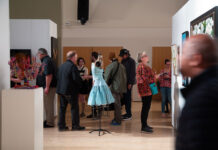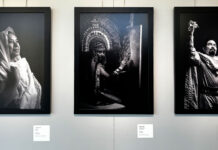All the other visual arts programs for SLCC have moved into the CAM as well and have dedicated studio/classroom spaces for teaching. In addition, small editorial suites are adjacent the classrooms.
“They have lots of labs. They do computer illustration, photography, digital photography, animation, and 3D graphics,” says Clark.
With all the labs and audio and video feed requirements for the varying programs, the IT and network infrastructure for the CAM is one of the most important features of the building.
“It’s the stuff you can’t see,” says Clark. “The ability to move information and stuff around in this building electronically is really amazing.”
The infrastructure is what gives CAM the ability to integrate all the visual arts and communication productions projects more seamlessly.
“We could set up cameras in the multipurpose room for a concert and feed those directly uncompressed digital signals through the control room and have the students do a video production from that master control suite instead of having to haul limited equipment down to the location,” says Clark.

The capability gives students an opportunity in many locations throughout the building to set up their own engineering sessions, make and edit their own recording, using all the inputs available to them. This capability has been built into the building but the faculty are still learning how the use the building first, according to Clark.
“I asked one of the installers about how many feet of wire went into this, and she said, ‘miles, not feet. Miles of wire.’ There are a lot of connections and there is a lot of equipment to connect to work properly,” says Tyler Smith.
The television studio is also one of the most complicated of spaces to set up properly, so it has been one of the last spaces to be finished according to Smith.
“The IT requirements were very high,” says Askerlund. “So we have a server farm in the building that serves the electronic components of the academic side, and it’s a system of racks that is separately cooled so we don’t depend on the building cooling system to cool these racks.”
According to Clark, CAM has 54 terabytes of storage available, or 54,000 gigabytes to translate into a storage size most people relate to.
“Right now very little space is used but the expansion capable is phenomenal,” says Askerlund. “So as the teaching ramps up, and student projects ramp up in size, we anticipate those servers will be added on into those racks, and racks will be added on with more servers as we go and provide that capability for students’ projects.”






